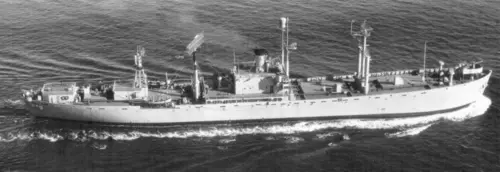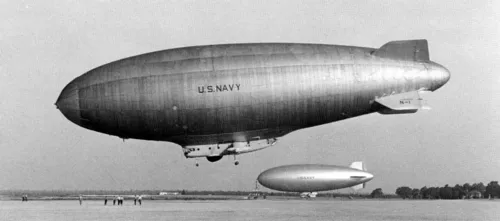Picket ships

The DEW line was extended using ships with radar. These were converted Liberty ships that could detect large aircraft such as bombers up to 220 nautical miles (410 km; 250 mi) away.
There were a total of sixteen ships—eight on the East Coast and eight on the West Coast. They were based out of Newport, Rhode Island (later Davisville, Rhode Island) and Treasure Island, California. They patrolled between 400 and 500 miles off of the U.S. coast.
AGR-1 USS Guardian

AGR-2 USS Lookout

AGR-3 USS Skywatcher

AGR-4 USS Searcher

AGR-5 USS Scanner

AGR-6 USS Locator

AGR-7 USS Picket

AGR-8 USS Interceptor


AGR-9 USS Investigator

AGR-10 USS Outpost

AGR-11 USS Protector

AGR-12 USS Vigil

AGR-13 USS Interdictor

AGR-14 USS Interpreter

AGR-15 USS Interrupter (renamed Tracer)

AGR-16 USS Watchman

These ships were equipped with AN/SPS-17A Search Radar and AN/SPS-8 Height-Finder Radar.


Radar picket ships were used during WWII as well as during the Cold War. One such use is described in Radar Pickets and Methods of Combating Suicide Attacks Off Okinawa
Picket aircraft
From February 1960 to April 1965, the U.S. Navy flew Airborne Early Warning (AEW) missions over the North Pacific and North Atlantic oceans. Lockheed WV-2 (EC-121K) Warning Star aircraft were used. This was the military version of the Lockheed L-1049 Super Constellation passenger airliner.


The missions extended the DEW Line radar coverage south and to the east to cover the approaches between Greenland, Iceland, and the United Kingdom (GIUK Gap) barrier.
Picket blimps
From the mid-1950s to 1961, blimps were used to provide gap filler radar coverage in the North Atlantic Ocean.
A version of the N-class blimp was fitted with AN/APS-20 radar with the antenna installed beneath the gondola. An AN/APS-69 height-finding radar antenna was mounted on top of the blimp. These had the designation ZPG-2.
A later version designated ZPG-3W had its larger (42-foot) radar antenna built inside the helium-filled envelope.

ALC Press has a page on WWII LTA bases.